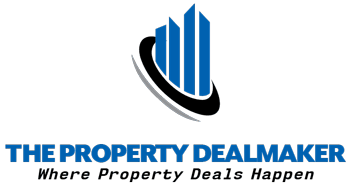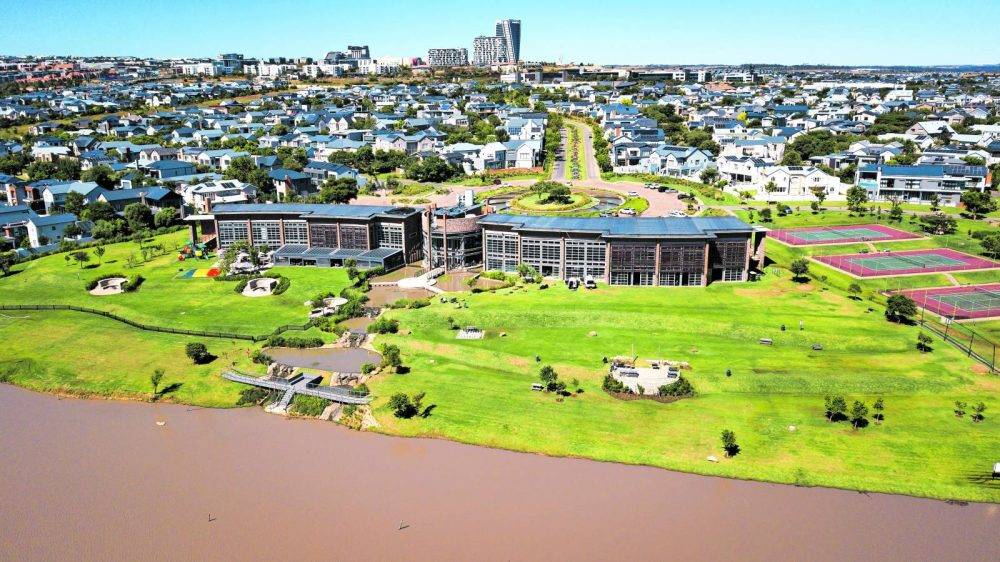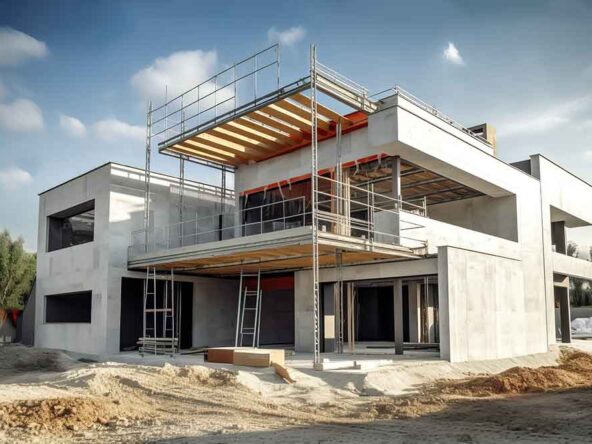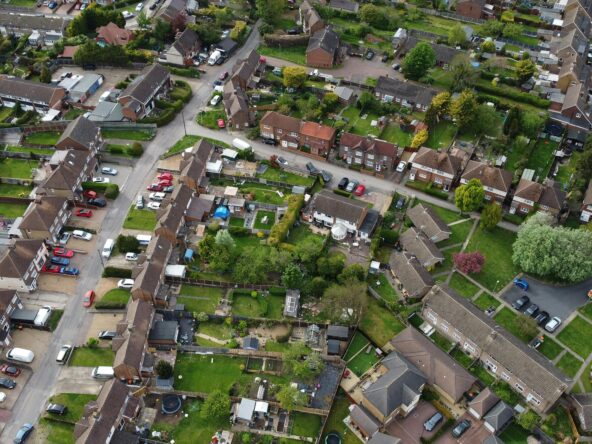Zoning is one of the most critical aspects of property investment, development and urban planning.
It serves as a regulatory framework that determines how land in specific areas can be used, ensuring organized and sustainable growth in cities and towns.
For property investors, developers, and even homeowners, understanding zoning regulations is essential to make informed decisions and maximize property potential.
In South Africa, zoning laws are established by municipalities and are outlined in zoning schemes that classify land into different categories, such as residential, commercial, industrial, and agricultural.
This article provides a comprehensive breakdown of South Africa’s zoning and sub-zoning categories.
Whether you’re looking to build a family home, invest in commercial property, or develop industrial infrastructure, this article will help you understand the different zoning regulations and unlock the potential of your property.
1. What is Zoning?
Zoning is a system of land-use regulation designed to ensure that development within a municipality is orderly, sustainable, and aligned with urban planning goals.
It involves dividing land into designated areas or “zones,” each with specific rules about how the land can be used and developed.
These rules help to manage growth, protect the environment, and maintain the character of different areas.
How Zoning Works in South Africa
Zoning laws in South Africa are detailed in municipal zoning schemes, which provide a framework for:
- Land Use Permissions: Defining what activities are allowed (e.g., residential housing, retail stores, factories).
- Development Standards: Regulating aspects like building height, coverage, and setbacks from property boundaries.
- Special Approvals: Some developments may require rezoning or special consent from the municipality to proceed.

Zoning Categories and Sub-Categories
Each zoning category is divided into sub-categories that specify land use in greater detail.
2. Residential Zoning and Sub-Categories
Residential zoning is the most common type of zoning in South Africa and is primarily focused on land designated for housing.
It is divided into sub-categories that determine the density, type of housing, and permissible activities within residential areas.
These sub-categories include Residential 1, 2, 3, and 4, each catering to different levels of development and housing needs.
2.1 Residential 1 (Res 1)
Residential 1 zoning is intended for low-density housing, such as single-family homes on individual plots.
Properties under this zoning typically allow one primary dwelling per stand, with restrictions on subdividing the land or building additional units.
Development standards often include limitations on building height, coverage (the percentage of land a building can occupy), and setbacks from property boundaries.
This zoning type is common in suburban neighborhoods, where the focus is on maintaining open spaces, privacy, and a quiet residential environment.
Activities such as running a business or renting out multiple units are generally not permitted unless special consent is obtained from the municipality.
2.2 Residential 2 (Res 2)
Residential 2 zoning allows for medium-density housing, including townhouses, cluster homes, and small-scale apartment complexes.
Unlike Residential 1, this zoning permits the development of multiple units on a single plot (eg: 10 or 20 dwellings per hectare. Where a hectare = 10,000 square meters), making it suitable for developments aimed at maximizing land use in growing urban areas.
Key restrictions often include a cap on the number of units per hectare, specific parking requirements, and limitations on building height.
Cluster homes fall within this zoning category.
Residential 2 zoning is ideal for areas transitioning from low-density to higher-density residential use, offering a balance between suburban living and urban accessibility.
2.3 Residential 3 (Res 3)
Residential 3 zoning supports high-density housing, such as multi-story apartment buildings and large-scale residential and townhouse complexes.
This zoning is typically found in urban centers or along major transport routes where high population density is desirable.
Under Residential 3 zoning, developers are allowed to build a greater number of units per hectare (eg: 30 or 40 dwellings per hectare), often with relaxed height restrictions compared to lower-density zones.
Municipalities may require additional considerations, such as adequate parking, green spaces, and access to public transport. This zoning category plays a vital role in urban densification and addressing housing shortages in cities.
2.4 Residential 4 (Res 4)
Residential 4 zoning represents the highest-density residential category, allowing for very high-rise apartment buildings or mixed-use developments that combine residential and commercial spaces.
This zoning is usually found in metropolitan areas where space is at a premium, and vertical development is necessary.
Under this zoning a municipality could allow as much as 80 or even 120 dwellings per hectare.
Developments in this category may include features like ground-floor retail or office spaces, with residential units occupying the upper floors.
While this zoning offers significant opportunities for maximizing land use, it often comes with stringent requirements related to infrastructure, environmental impact, and public amenities to support the increased population density.
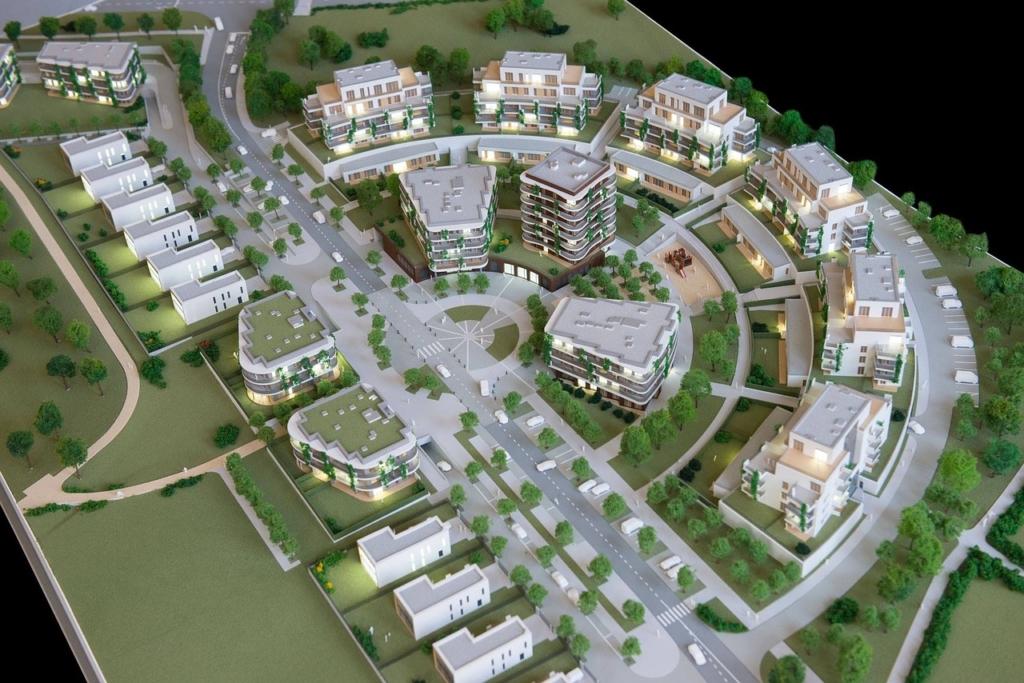
3. Business Zoning and Sub-Categories
Business zoning is designed for commercial activities such as retail, offices, and services.
It is divided into sub-categories—Business 1, 2, 3 and 4 – each catering to different scales and intensities of business use.
These zones are critical for supporting economic activity and creating hubs for employment and trade.
3.1 Business 1
Business 1 zoning is typically found in central business districts (CBDs) and major commercial hubs.
It allows for a wide range of activities, including retail stores, office buildings, entertainment venues, and restaurants.
This zoning is designed to accommodate high foot traffic and mixed-use developments, often integrating commercial spaces with residential units. This zoning is most the best for shopping centres and malls and has the least amount of restriction with regards to the type of shops that can be on the premises.
Developments in Business 1 zones are subject to specific regulations regarding building height, coverage, and parking facilities.
Municipalities may also impose design guidelines to ensure that developments align with the aesthetic and functional goals of the area.
3.2 Business 2
Business 2 zoning is intended for secondary commercial areas, often located outside the main CBD.
This zoning allows for smaller-scale retail and office spaces, as well as service-oriented businesses such as car repair shops, small warehouses, and distribution centers.
Business 2 zones are typically less dense than Business 1 zones and may have stricter limitations on building height and coverage.
These areas serve as commercial nodes for suburban communities, providing essential goods and services without requiring residents to travel to the city center.
3.3 Business 3
Business 3 zoning is designated for neighborhood or local business use.
This zoning is focused on small-scale commercial activities that cater to the immediate community, such as convenience stores, coffee shops, and professional services like medical practices or law offices.
The emphasis in Business 3 zones is on maintaining compatibility with the surrounding residential areas.
As such, regulations often include restrictions on noise, signage, and operating hours to minimize disruptions to nearby residents.
This zoning supports the development of walkable neighborhoods with convenient access to essential services.
3.4 Business 4
Business 4 zoning is specifically designed for light industrial and service-related commercial activities that are not suited for traditional retail or office spaces but also do not fit into heavy industrial zoning.
Note that this zoning does not include shopping centres at all.
Examples include storage facilities, small-scale manufacturing, car dealerships, and distribution centers.
This zoning category is typically found on the outskirts of urban areas or in mixed-use business parks.
4. Industrial Zoning and Sub-Categories
Industrial zoning is tailored for manufacturing, production, and logistics activities.
It is divided into three main sub-categories, each catering to different scales and intensities of industrial use.
4.1 Industrial 1 (Light Industrial)
Industrial 1 zoning is intended for light manufacturing and production activities that have minimal environmental impact.
Examples include small-scale factories, assembly plants, printing shops, and technology manufacturing.
This zoning is characterized by stricter controls on noise, emissions, and waste management to ensure compatibility with nearby commercial or residential areas.
Industrial 1 zones are often located in industrial parks or transitional zones between commercial and heavier industrial areas.
4.2 Industrial 2 (Medium Industrial)
Industrial 2 zoning allows for medium-scale industrial operations, including logistics hubs, large warehouses, and more intensive manufacturing processes.
These areas typically accommodate industries that require more space and generate moderate levels of noise or emissions.
Municipalities may impose additional requirements, such as buffer zones or environmental compliance measures, to minimize the impact on surrounding areas.
Industrial 2 zones are often situated further from residential areas than Industrial 1 zones.
4.3 Industrial 3 (Heavy Industrial)
Industrial 3 zoning is reserved for heavy industrial activities that involve significant environmental or infrastructural impact.
Examples include chemical plants, steel mills, mining operations, and large-scale manufacturing facilities.
This zoning comes with stringent environmental regulations, such as pollution controls, waste disposal systems, and safety measures.
Industrial 3 zones are typically located in isolated areas or near major transport routes to facilitate logistics and minimize their impact on urban environments.
5. Agricultural Zoning and Sub-Categories
Agricultural zoning is focused on preserving land for farming, livestock grazing, and other rural activities. It ensures that agricultural areas are protected from urban encroachment and incompatible uses.
5.1 Agricultural 1
Agricultural 1 zoning is intended for general farming activities, such as crop cultivation, livestock grazing, and forestry.
This zoning often includes restrictions on the minimum size of plots to prevent excessive subdivision that could undermine agricultural productivity.
Residential use is typically allowed in Agricultural 1 zones, but only as part of a working farm.
Additional activities, such as agri-tourism or small-scale food processing, may require special municipal approval.
5.2 Agricultural 2
Agricultural 2 zoning is tailored for intensive farming activities, such as poultry farms, feedlots, greenhouses, and aquaculture.
These operations often require additional infrastructure and may have stricter environmental compliance requirements due to their higher impact.
This zoning allows for more specialized agricultural activities, but municipalities may impose conditions to manage waste, water usage, and proximity to residential or conservation areas.

6. Special Use and Institutional Zoning
Special use zoning is reserved for land that serves public or institutional purposes, such as schools, hospitals, government facilities, and religious institutions.
6.1 Institutional Use
Institutional zoning covers facilities that provide essential public services, including educational institutions, healthcare centers, and places of worship.
Regulations often include restrictions on building height, parking, and access to ensure that these facilities integrate smoothly with surrounding areas.
6.2 Public Open Space
Public open space zoning is designated for parks, recreational facilities, nature reserves, and other areas intended for public use and enjoyment.
Development in these zones is highly restricted to preserve natural landscapes and provide recreational opportunities.
6.3 Special Purpose Zones
Special purpose zoning applies to unique land uses that do not fall into standard categories.
Examples include airports, military bases, utility services, and heritage sites.
These zones often require detailed planning and oversight due to their specialized nature and potential impact on surrounding areas.
8. The Importance of Zoning Compliance
Zoning compliance is a critical aspect of property ownership and development in South Africa.
Following zoning regulations not only ensures legal protection but also helps maintain the orderly growth and sustainability of communities.
Non-compliance can lead to severe consequences, including fines, legal disputes, or even the demolition of unauthorized structures.
8.1 Why Zoning Compliance Matters
- Legal Security: Complying with zoning regulations protects property owners from legal challenges and potential penalties. It also ensures that any development or investment is fully sanctioned by the municipality.
- Maximizing Property Potential: Understanding and working within zoning laws can help property owners optimize land use. For example, applying for rezoning or special consent could unlock opportunities for higher-density developments or mixed-use projects.
- Community and Environmental Harmony: Zoning laws are designed to balance development with community needs and environmental sustainability. Compliance helps prevent conflicts, such as noise, pollution, or overcrowding, which can arise from incompatible land use.
8.2 Consequences of Non-Compliance
Failing to adhere to zoning regulations can result in significant setbacks:
- Fines and Penalties: Municipalities may impose financial penalties on property owners or developers who violate zoning laws.
- Halted Developments: Unauthorized construction or land use may lead to the issuance of stop-work orders, delaying projects and increasing costs.
- Demolition Orders: In extreme cases, structures that do not comply with zoning laws may be ordered to be demolished, resulting in financial loss and reputational damage.
8.3 How to Ensure Compliance
- Obtain Zoning Certificates: Always verify the zoning designation of a property by obtaining a zoning certificate from the municipality. This document outlines the permitted uses and restrictions for the land.
- Consult with Professionals: Engage with town planners, architects, or property consultants who specialize in zoning to navigate complex regulations.
- Apply for Rezoning or Special Consent: If the intended use of a property is not permitted under its current zoning, property owners can apply for rezoning or special consent. This process involves submitting a detailed application and meeting municipal requirements, such as public participation and environmental assessments.
- Stay Informed: Zoning laws can change over time as municipalities update their spatial development frameworks. Property owners and developers should stay informed about any amendments that may affect their land.
Zoning compliance is more than just a legal obligation; it is a key component of responsible property development.
By understanding and respecting zoning regulations, property owners can contribute to well-planned, thriving communities while safeguarding their investments.

9. Navigating Rezoning and Special Consent Processes
In some cases, the current zoning of a property may not align with its intended use or the owner’s development goals.
To address this, property owners can apply for rezoning or special consent from their local municipality.
These processes provide flexibility within the zoning framework, enabling property owners to adapt to changing needs while ensuring compliance with municipal regulations.
9.1 What is Rezoning?
Rezoning is the process of changing the zoning designation of a property to allow for a different use or level of development than currently permitted.
For example, a property zoned for Residential 1 (single-family homes) might be rezoned to Residential 3 to allow for high-density apartment buildings.
The rezoning process typically involves:
- Application Submission: Property owners must submit a rezoning application to the municipality, including detailed plans and supporting documents such as a motivation report and site development plans.
- Public Participation: Municipalities usually require public notices to inform surrounding property owners and give them an opportunity to raise objections or support the rezoning.
- Municipal Review: Town planners and municipal officials evaluate the application against the municipality’s spatial development framework, environmental considerations, and infrastructure capacity.
- Approval or Rejection: The municipal council makes the final decision. If approved, the property’s zoning is officially updated, and the owner can proceed with the proposed development.
Rezoning can unlock significant value for a property, but it is often a lengthy and complex process.
Engaging with professionals, such as town planners, property experts or attorneys, can help streamline the process and improve the chances of success.
9.2 What is Special Consent?
Special consent is an alternative to rezoning that allows property owners to undertake specific activities not typically permitted under the existing zoning, without changing the zoning designation.
For instance, running a small home-based business in a Residential 1 zone may require special consent from the municipality.
The process for obtaining special consent involves:
- Application Submission: Similar to rezoning, property owners must submit an application to the municipality, including detailed descriptions of the intended activity and its potential impact on the area.
- Public Participation: Notices are issued to surrounding property owners to gather feedback on the proposed activity.
- Municipal Evaluation: The municipality assesses the application to ensure the proposed activity aligns with local planning objectives and will not negatively impact the community.
- Conditional Approval: If approved, the municipality may impose conditions to mitigate any potential negative effects, such as limits on operating hours, noise control measures, or parking requirements.
9.3 Key Considerations for Rezoning and Special Consent
- Time and Costs: Both processes can be time-consuming and may involve application fees, public notices, and professional service costs.
- Community Support: Gaining the support of neighbors and addressing potential objections can significantly impact the outcome of an application.
- Compliance with Municipal Frameworks: Applications that align with the municipality’s spatial development framework and zoning scheme are more likely to be approved.
Rezoning and special consent offer property owners the opportunity to maximize their land’s potential while remaining compliant with municipal regulations.
However, these processes require careful planning, thorough documentation, and proactive engagement with municipal authorities and the community.

Aslam is from Johannesburg, South Africa and graduated with a BComm degree from the University of South Africa and followed that up with a BComm Hons degree in Finance and Investments.
He has spent over 18 years in the financial services sector, with 12.5 years in the commercial property finance arena with 3 of the major banks in the country.
His specialty being deal structuring and finance solutions for commercial property investors and developers across the commercial property sector, including large scale retail developments, high density residential investments , industrial and office property.
Aslam was also a fast food franchise investor for 7 years, is experienced in digital marketing and online lead generation and has owned and managed multiple residential properties.
